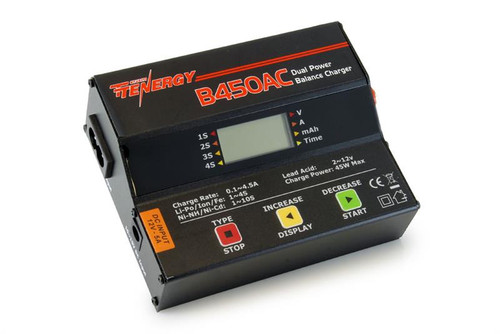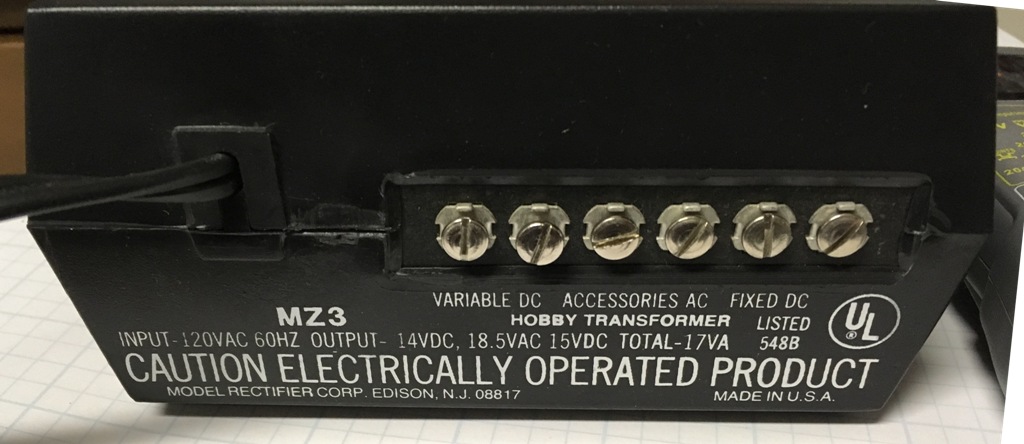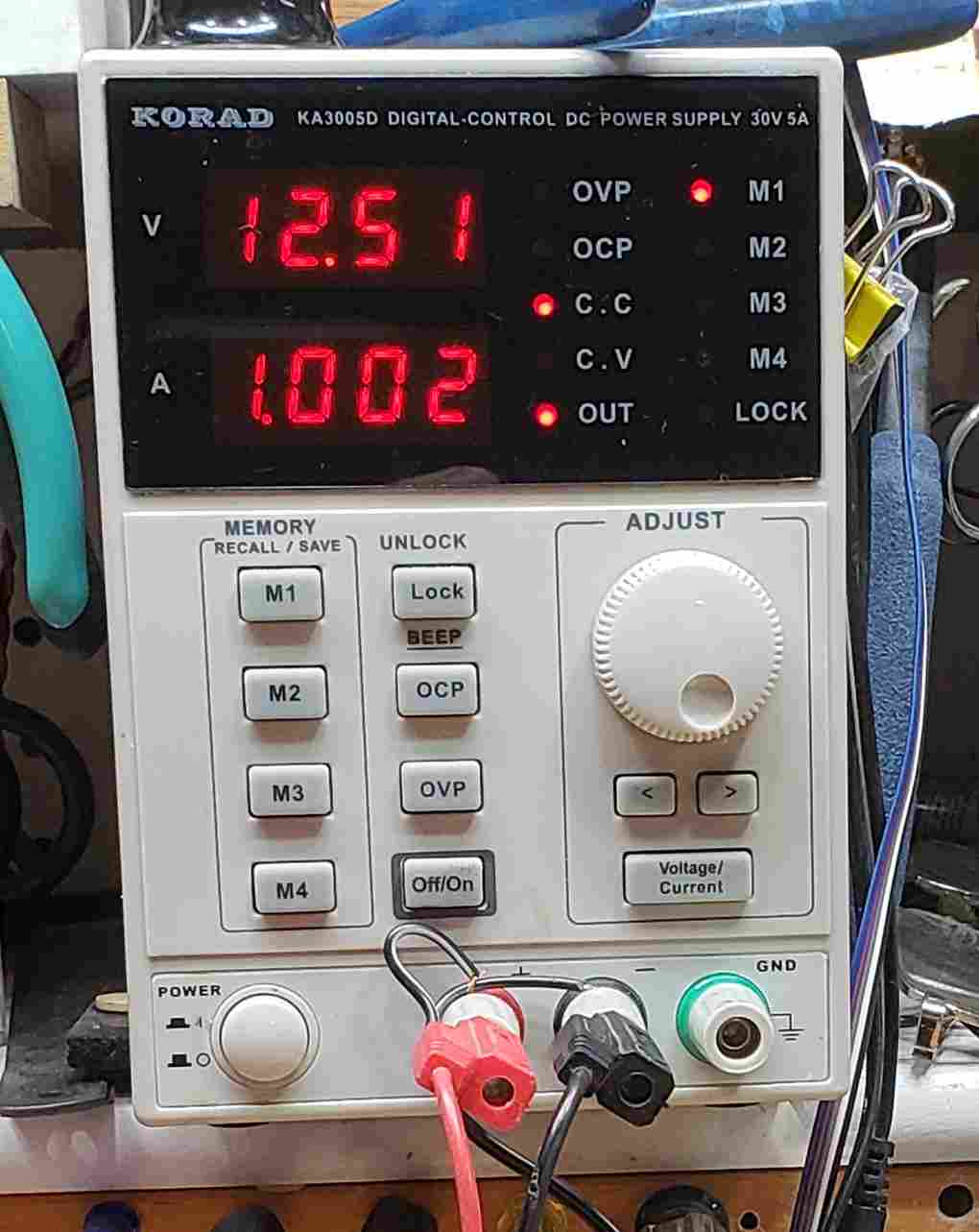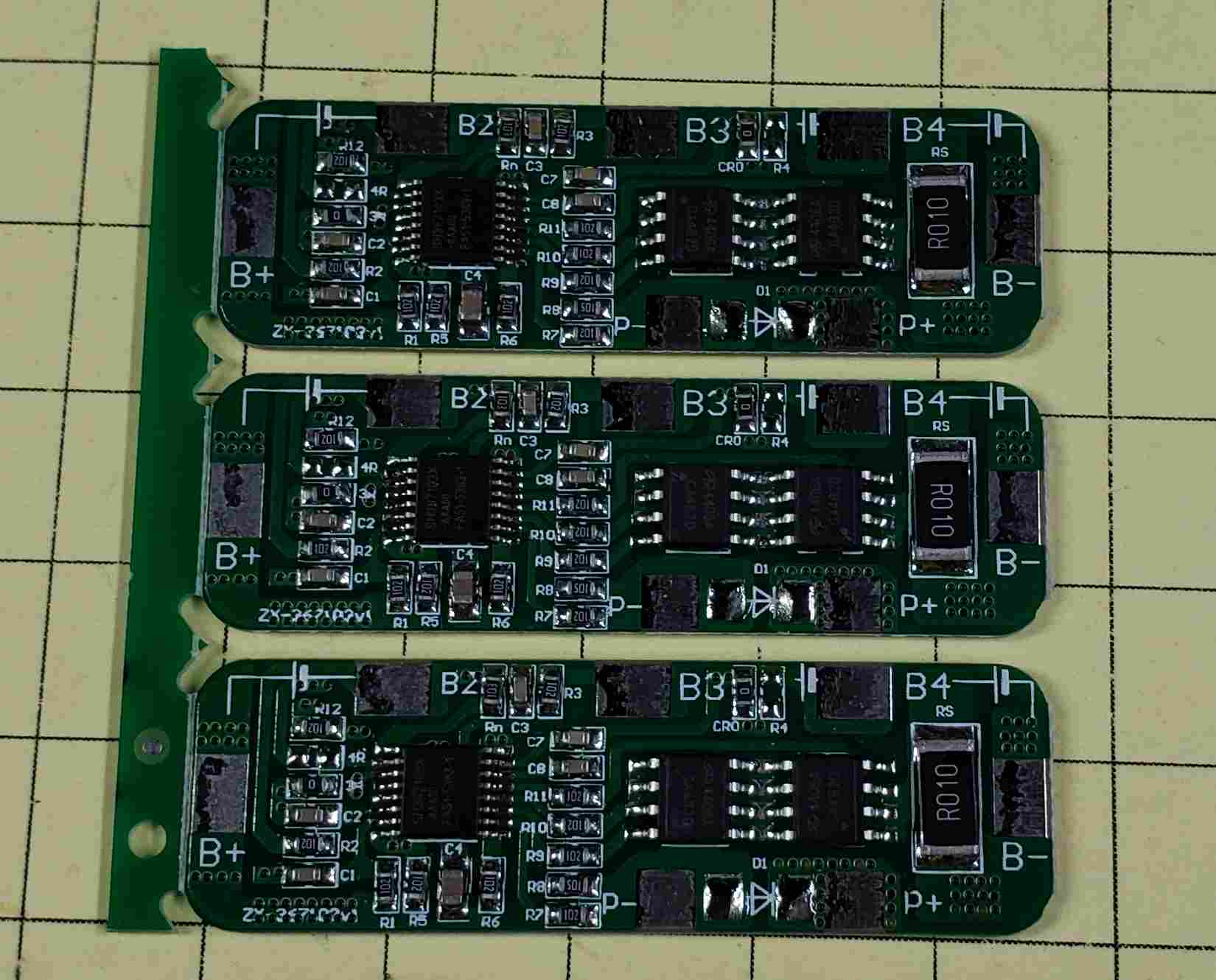My newly RC converted Hartland 0-4-0 uses 3 EcoGear 3400 mAh batteries with built-in pcb protection board. To get started, I have been removing them to charge them individually. Now that everything is dialed in, I want to add a charge port so I can charge the 11.1 v pack without removing it. What is the latest and best Lithium Ion 3 cell charger?
does this mean that price is no object since you want the best?
the best would be wiring for a balancing charger, and probably a Tenergy…
if you want to save money, then the answer is different, because you really no longer can request latest and best as top priorities.
Personally I’d get an inexpensive charger pre-set for 3 cells…
Greg

Tenergy B450AC 45W AC/DC Compact Balance Charger for NiMH/NiCd/LiPo/Li-ion /LiFePO4/Lead Acid Battery Packs
Thanks, Greg and John. For $28 plus shipping this looks like a real deal. Any comments about this specific charger?
(I do have some LiPo batteries to charge also.)
David Palmeter said:
My newly RC converted Hartland 0-4-0 uses 3 EcoGear 3400 mAh batteries with built-in pcb protection board. To get started, I have been removing them to charge them individually. Now that everything is dialed in, I want to add a charge port so I can charge the 11.1 v pack without removing it. What is the latest and best Lithium Ion 3 cell charger?
David - I use the exact same protected cells to power a number of things - I have charged the cells when they are wired in series (3 to give 11.1 volts) by applying 13 or so volts to the series wired cells without removing them - just unplug from the load - since each cell has individual protection the charging works well. I use a charger that will only deliver 1 amp so the current that is applied to each cell is low.
Surely worth a try!
dave
So Dave, is it your opinion that with the internal pcb protection in each cell, that a balance charger is not necessary (that would be my opinion)… but still useful?
What about fast charging?
All that aside, $28 for a balance charger sounds like a good deal, you could certainly spend less, but not much less… I personally like the idea of a balance charger, even with only 3 cells.
Reading the reviews on Amazon, they are not really good: https://www.amazon.com/Tenergy-Compact-Balance-Charger-LiFePO4/product-reviews/B0170VT6Q0/ref=cm_cr_dp_d_hist_1?ie=UTF8&filterByStar=one_star&reviewerType=all_reviews#reviews-filter-bar
if you will use it as a balancing charger, you have to fiddle with the balancing plug apparently, since it is supplied with a 4 cell one… just google the charger model number, lots comes up.
Strange it is no longer offered on Amazon.
Greg
David Bodnar said:
David - I use the exact same protected cells to power a number of things - I have charged the cells when they are wired in series (3 to give 11.1 volts) by applying 13 or so volts to the series wired cells without removing them - just unplug from the load - since each cell has individual protection the charging works well. I use a charger that will only deliver 1 amp so the current that is applied to each cell is low.
Surely worth a try!
dave
Dave - Are you saying that I can use any 13 vdc, 1 amp source to charge the 3 series wired, protected Lithium Ion calls? How long does the charging take? How do I know when the cells are charged?
Thanks,
David
David - protected cells will stop charging when their voltage gets to about 4 volts - so long as all of the cells are at about the same level of charge (or discharge) they should all shut off at around the same time -
I do my charging with a bench power supply that tells me how much current is being drawn which is a clear indication of charging being don
As to how long that can be figured mathematically - if the cells are rated at 3400 mah and you are charging at 1 amp it should take about 3 or 4 hours - ideally you should charge them a bit more slowly, say delivering 300 to 500 ma for 10 or so hours.
This is the type of power supply that I use -
https://www.amazon.com/Tekpower-TP1803D-Variable-Alligator-Computer/dp/B00EUH18DC/ref=sr_1_1?ie=UTF8&qid=1541446239&sr=8-1&keywords=0-18+volt+power+supply&dpID=41G-2sNZ0vL&preST=SY300_QL70&dpSrc=srch
You can set it to 13 or 14 volts (upper knob), connect it to the battery and dial down the current (bottom knob) to whatever you like - I generally keep the current low to preserve the cells as they don’t like to be charged too quickly.
dave
So, does the protection circuit completely “disconnect” the cell?
If that is true, if you have one cell very discharged and the other 2 pretty full, then you could have the series “turn off” before the discharged cell fully charged it would seem. Of course, then you discharge the set and charge it back up and I would guess it would eventually “catch up” bit by bit, but maybe not.
Greg
Greg - I have not observed that happening - I have a number of 3 cell packs made up of cell phone batteries that work very well being charged with 13 or 14 volts.
I just hook them to the power supply and turn the current down to 100-200 ma and let them charge - it is possible that something like you describe but since the cells I am using are always in a pack they should charge at the same rate.
dave
I understand, was just speculating about what happens if one cell is in a much lower state of charge, so the the other 2 get full way before the discharged one. Not necessarily defective, although as you state, they should all charge together… to be nit picky, they ALWAYS will charge at the same rate because they are in series, so by ohms law and a few others, they will all get the same current.
So just wondering your thoughts, and also the protection circuit fully disconnects the cell right? open circuit?
Greg
David Bodnar said:
As to how long that can be figured mathematically - if the cells are rated at 3400 mah and you are charging at 1 amp it should take about 3 or 4 hours - ideally you should charge them a bit more slowly, say delivering 300 to 500 ma for 10 or so hours.
dave
I rummaged around in my stash of transformers and came up with this:

At about 85% throttle indication, I get exactly 13 volts. According to the specs:

Full throttle, full load is about 1.2 amps so 85% should be about 1 amp (if I haven’t broken too many laws of physics). Would this work if I charge with the throttle at 85%? Or, if I wanted to keep the voltage at 13 but wanted to restrict the amperage to 300 to 500mA, how do I do that? A simple inline resistor would reduce both volts and amps, right?
EDIT: Just realized that Pulse Power would be a bad idea for charging, I assume.
NO!
It’s way more complex than just current. The current stated is an upper limit. I’ll let someone else explain why you cannot run constant current or constant voltage, ESPECIALLY for lithium chemistries… bold is to keep you from starting a fire!
Greg Elmassian said:
I understand, was just speculating about what happens if one cell is in a much lower state of charge, so the the other 2 get full way before the discharged one. Not necessarily defective, although as you state, they should all charge together… to be nit picky, they ALWAYS will charge at the same rate because they are in series, so by ohms law and a few others, they will all get the same current.
So just wondering your thoughts, and also the protection circuit fully disconnects the cell right? open circuit?
Greg
Greg - just did a test with three of the 18650 cells - two were at about 3.4 volts and one was at 3.8 - all three started pulling current (as shown on the bench power supply) but the current draw dropped to 0 after a few seconds when the nearly fully charged cell shut down.

I replaced it with another call at around 3.4 volts and all three are happily charging at 1 amp. The voltage is now at 12.43 and rising. It should shut down when the voltage gets to 12.75.

FYI, the cells I am using are rated to charge at up to 1/2 of their rated current (1.5 amps) - data is below
dave
Battery Specifications:
Capacity: Nominal: 3000mAh, Minimum: 2200 mAh
Internal PCB protection prevents under-voltage at 2.5V and over-voltage at 4.25V
Nominal Voltage: Average 3.7V
Cut-off Voltage: 2.5V
Cycle Performance: 90% of initial capacity at 400 cycles
Cycle life: > 500 cycles
Charge: Current = 0.5C (~1500mA) Voltage = 4.2 V End Current = 0.01 mA
Discharge: Current = 0.5C (~1500mA) End Voltage = 3.0V
Battery Length: 69mm (2.72 inches)
Yes, that was what I was driving at, without a balancing charger, basically if one cell is very close to full, it could shut off charging for the rest of the cells.
Of course you could submit if this happens, there’s something not quite right in the first place, but a balancing charger would have charged, the first cell and stopped it’s charge, and continued charging the 2 other cells, don’t you agree?
Anyway, just a bit of thinking… back to our OP’s problem… it is MUCH MORE than constant current or constant voltage, smart chargers monitor the voltage of the cell as it charges, and the rate of charge, and watch for anything wrong, and then look for the “charge termination” conditions, which vary according to chemistry.
You can sort of get away with a dumb charger, or even a power supply on nicads, it’s VERY iffy on nimih, and it’s downright dangerous on lithium based cells. If you want to know why, there’s excellent online tutorials, Battery University is often quoted… not everything there is completely accurate or up to date, but it’s 95% good…
My vote is purchase the balancing charger you found, and read a bit about it, apparently the manual is not very clear, and you have to do something to get a 3 cell balancing cable hooked up. With the protection in each cell, it should be pretty much impossible to mess up.
Greg
David - another option that I have used successfully is to install a dedicated protection / charging board that automatically tends to 3 cells - I have used several that look like this one from Amazon
https://www.amazon.com/Lithium-Battery-Charging-Protection-Charger/dp/B07DBVKB5B/ref=sr_1_3?ie=UTF8&qid=1541529515&sr=8-3&keywords=3+cell+lithium+ion+battery+board&dpID=51ga9oFpvUL&preST=SY300_QL70&dpSrc=srch
NOTE that the price is for 10!
or this from eBay
Once you add that to your unprotected cells you have a battery pack that can be charged from any 14 or 15 volt DC power source.
dave
Greg Elmassian said:
Yes, that was what I was driving at, without a balancing charger, basically if one cell is very close to full, it could shut off charging for the rest of the cells.
Of course you could submit if this happens, there’s something not quite right in the first place, but a balancing charger would have charged, the first cell and stopped it’s charge, and continued charging the 2 other cells, don’t you agree?
Anyway, just a bit of thinking… back to our OP’s problem… it is MUCH MORE than constant current or constant voltage, smart chargers monitor the voltage of the cell as it charges, and the rate of charge, and watch for anything wrong, and then look for the “charge termination” conditions, which vary according to chemistry.
You can sort of get away with a dumb charger, or even a power supply on nicads, it’s VERY iffy on nimih, and it’s downright dangerous on lithium based cells. If you want to know why, there’s excellent online tutorials, Battery University is often quoted… not everything there is completely accurate or up to date, but it’s 95% good…
My vote is purchase the balancing charger you found, and read a bit about it, apparently the manual is not very clear, and you have to do something to get a 3 cell balancing cable hooked up. With the protection in each cell, it should be pretty much impossible to mess up.
Greg
I do agree, Greg - that is what the board that I just described on another posting does. Nice!
dave
Dave on that first link for a 3 cell charger, I don’t see an IC anywhere on that board, am I missing something? At first glance, it just seems to be regulated voltage, not a charger.
The second link clearly shows the battery charging IC…
Greg
Greg - I agree on the missing controller -that one may not be a good example - the ones I used most recently are shown here:

- they are available on eBay:
Lots of options at low cost
dave
Looks like that one is set up for 3 or 4 cells, do you have to do anything like jumpers if you only use 3 cells?
clearly the price is right (https://www.largescalecentral.com/externals/tinymce/plugins/emoticons/img/smiley-laughing.gif)
Greg